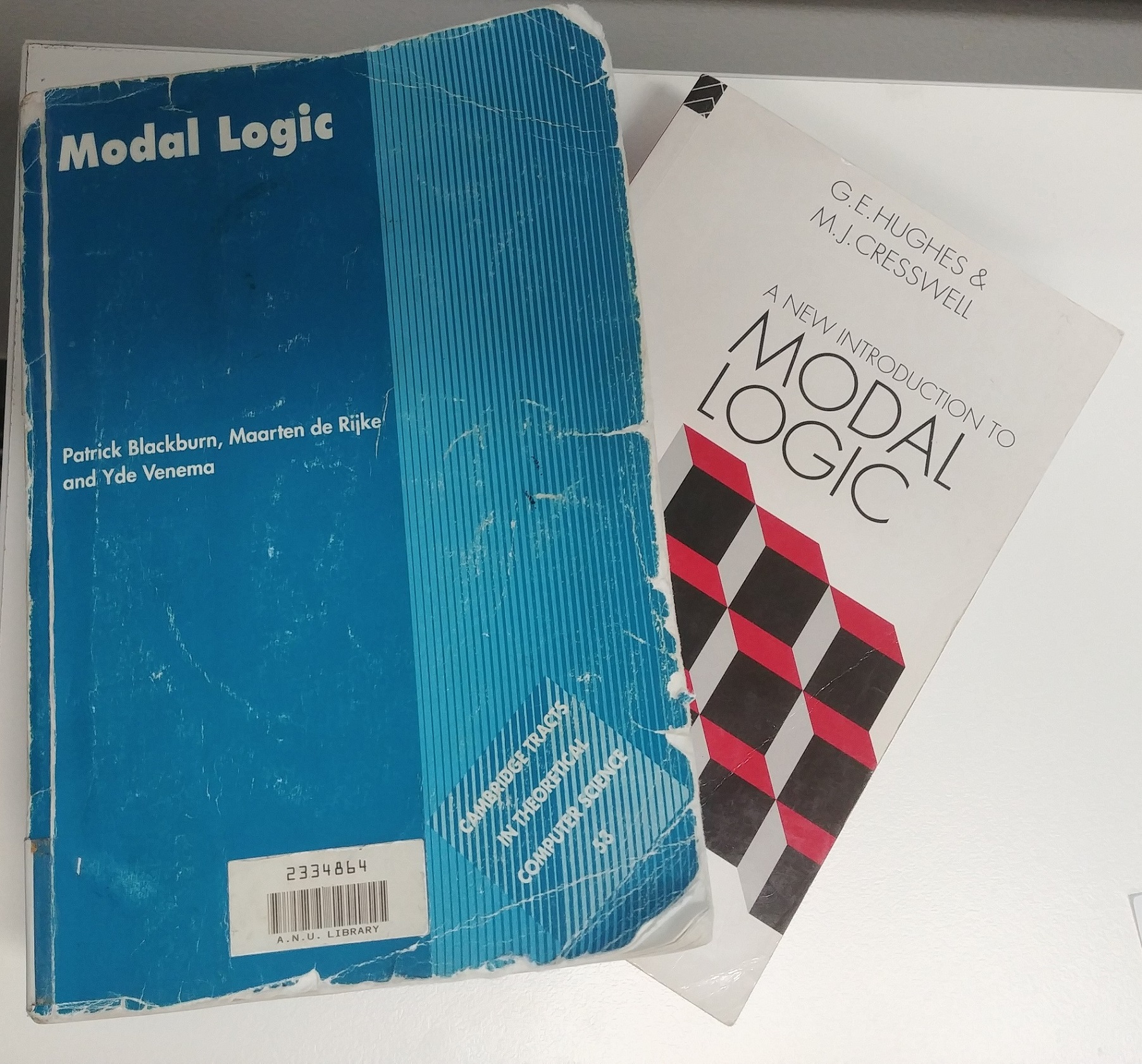Authors: Patrick Blackburn (LORIA), Maarten de Rijke (University of Amsterdam), and Yde Venema (University of Amsterdam)
Reference: Blackburn, Patrick, Maarten De Rijke, and Yde Venema. Modal logic. Cambridge Tracts in Theoretical Computer Science vol. 53. Cambridge University Press, 2001.
Why this paper? Cited by Intuitionistic Gödel-Löb Logic, à la Simpson, Two-dimensional Kripke Semantics, and First-Order Fischer Servi Logic
I learned modal logic from a book by Hughes and Cresswell, a pair of philosophers from my home city of Wellington, so it was interesting for me to see the very different approach taken in this week’s book, which is now the standard reference for the field ( along with the Chargrov- Zakharyaschev book of the same name). While the first sentence of Hughes and Cresswell reads “Modal logic is the logic and possibility and necessity, of ‘must be’ and ‘may be’”, the first of Blackburn et al’s three ‘slogans’ frames modal logic as a more general phenomenon, of “simple yet expressive languages for talking about relational structures”. Hence possibility and necessity, or unary modalities in general, are not privileged, with almost all results developed in terms of ‘modal similarity types’, logical operators of any given arity. Familiar box and diamond logic is but one corner of a menagerie that also includes temporal logic and propositional dynamic logic (where we have a pair of modalities for each program). The key factor that distinguishes these logics from first order logic, which after all also deals with relations on sets, is their second slogan, that modal logics “provide an internal, local perspective on relational structures”, where we can talk about the truth of propositions relative to points in the structure. This point of view includes, but is not limited to, the standard “possible worlds” view where a statement may hold at one world, but not another.
Modal logic thus defined is a big topic, and despite its name and hefty weight, this book does not try to provide a comprehensive overview of all that is known. The big two topics explicitly highlighted in the introduction as missing are extensions of modal logic with quantifiers, and any notion of proof theory beyond presenting a few axiomatisations (proofs via ‘semantic diagrams’ – more usually called tableaux – were a major focus of Hughes and Cresswell). A topic that looms large in my work – intuitionistic modal logic – is so far from this book’s concerns that it is not even mentioned as a missing topic!
What this book offers instead is a comprehensive grounding in the semantics of classical modal logic, and its relationship with other logics. The first topic builds up to highlights such as the Goldblatt-Thomason theorem (I will parochially observe that Goldblatt is another Wellingtonian logician!), which exactly characterises which classes of frames can be defined by modal formulae, and various techniques for proving completeness. The second topic features the Van Benthem characterisation theorem expressing modal logic as a certain well-behaved (‘bisimulation-invariant’) fragment of first order logic. We also see duality theory, in which links are made with equational logic / universal algebra; indeed this point of view is used to prove Goldblatt-Thomason. These developments substantiate the book’s final slogan, that “modal logics are not isolated formal systems”.

Leave a Reply